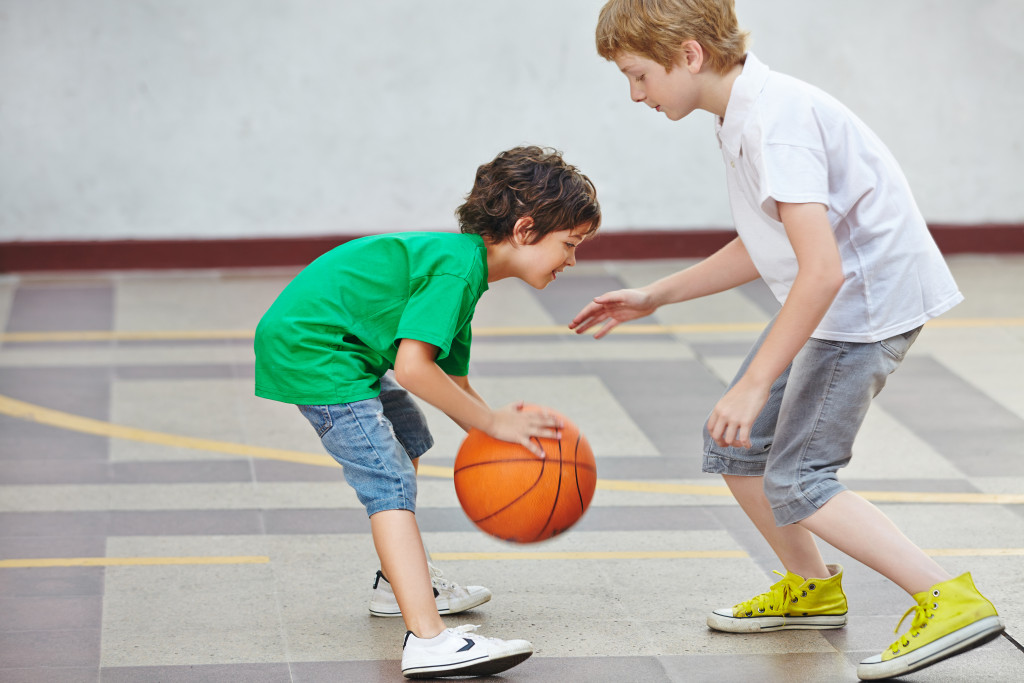• Sprains and strains are common sports injuries that can be treated with rest, ice, compression, and elevation.
• Concussions are traumatic brain injuries caused by an impact on the head. Symptoms include headaches and confusion.
• Fractures occur when a break in one of the bones is caused by force from an impact.
• Find a good pediatric dentist to determine the best course for treating sports-related tooth loss.
• Switching your child to safer sports can help them stay active and healthy while minimizing their risk of injury.
As a parent, you want your children to stay active and healthy, so naturally, you encourage them to participate in sports. But with any physical activity comes the risk of injury. As a parent, it’s essential to know what kinds of injuries your child might sustain from sports and how you can help prevent or treat them. Here are a few of the most common sports-related injuries that could affect your child:
Sprains and strains
Sprains occur when a ligament is stretched or torn as a result of sudden movement. This can happen if your child falls awkwardly or twists too quickly while playing sports like soccer or baseball. Strains involve stretching or tearing muscles due to overextending them during physical activity such as running or jumping. Both sprains and strains can be very painful but are usually not serious. The best way to treat these types of injuries is rest, ice, compression, and elevation (RICE).
Concussions
A concussion is a type of traumatic brain injury that occurs when the head experiences a blow or jolt from an impact, such as falling onto the ground while playing a sport like soccer or hockey. Symptoms include headaches, trouble concentrating, confusion, nausea/vomiting, sensitivity to light/noise, and fatigue. If your child sustains a concussion, you should seek medical attention immediately for a proper diagnosis and treatment plan.
Fractures
A fracture occurs when there is a break in one of the bones in the body caused by force from an impact, such as falling down onto hard ground during contact sports like basketball or rugby. This can be extremely painful for your child, so it’s important that they get medical treatment right away if they think they may have broken a bone while playing sports. Treatment will vary depending on the severity of the fracture but generally includes immobilization with a cast or brace and/or medication for pain relief and swelling reduction.
Tooth loss

It’s not always the joints, muscles, or bones that take a hit while playing sports. Sometimes it’s even your teeth! Tooth loss is more common in contact sports like rugby and hockey but can occur in any sport if your child takes a heavy blow to their face. If you suspect that your child has lost a tooth while playing sports, it’s important to find a good pediatric dentist immediately. They can help determine the best course of action to replace and restore the missing tooth. They may recommend a bridge, implant, or even a partial denture.
Safer sports your kids can participate in
While injuries are always a possibility when it comes to sports, there are some that carry less risk than others. If you’re looking to keep your children safe while still allowing them to stay active and have fun, consider lower contact or non-contact sports such as the following:
Swimming
Swimming is a great way to get your child’s heart rate up without risking injury. It’s also a low-impact sport which makes it easier on the joints than activities such as running or jumping. Additionally, swimming is a great way to help children learn valuable life skills such as respect for their bodies, the importance of safety, and discipline.
Golf
Golf is an excellent sport for kids of all ages. It’s low-impact, so there’s less risk of injury from overuse or strain. Plus, it allows them to get outdoors and enjoy some fresh air while developing their motor skills, hand-eye coordination, and concentration.
Competitive Yoga
Competitive yoga is becoming increasingly popular among children and teens. It’s a great way for them to get the physical activity their bodies need while also learning to be mindful of their bodies and practice self-care. Plus, there’s less risk of injury since it’s a low-impact sport that doesn’t involve a lot of physical contact.
Dance

Dancing is an enjoyable way to get your child’s heart rate up while also letting them express themselves creatively. It’s a low-impact sport that can help strengthen and tone the muscles, as well as improve coordination and balance. Plus, it’s fun!
By letting your kids switch to safer sports, you’ll be helping them stay active and healthy while minimizing their risk of injury.
It is important to be aware of the potential risks associated with sports and take proper precautions. With the knowledge discussed here under your belt, you’ll feel more confident about letting your child get involved in sporting activities knowing that they’re well protected from harm!

